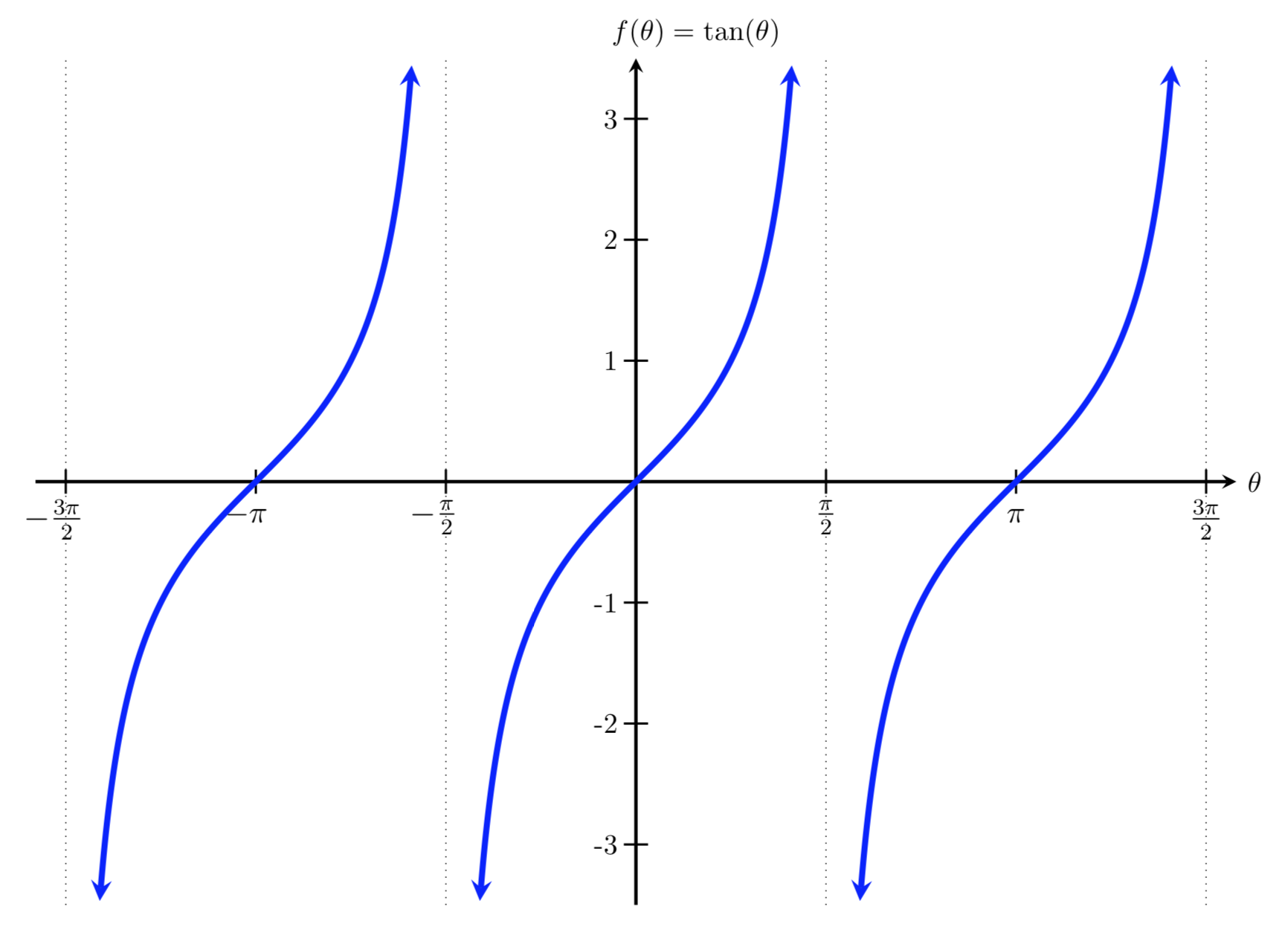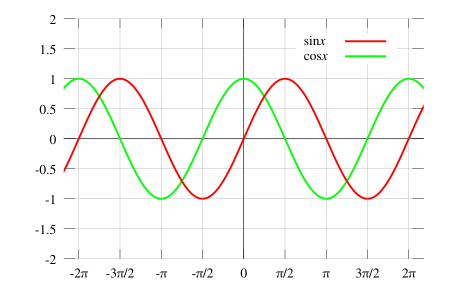3.1 KiB
3.1 KiB
Sine/Cosine
Given the above graph:
- At the origin,
sin(x) = 0andcos(x) = 1 - A full wavelength takes
2\pi
Manipulation
| Formula | Movement |
|---|---|
y = cos(x) - 1 |
Vertical shift down by 1 |
y = 2cos(x) |
Vertical stretch by a factor of 2 |
y = -cos(x) |
Flip over x axis |
y = cos(2x) |
Horizontal shrink by a factor of 2 |
Periodic Functions
A function is considered periodic if it repeats itself at even intervals, where each interval is a complete cycle, referred to as a period.
Sinusoidal Functions
A function that has the same shape as a sine or cosine wave is known as a sinusoidal function.
There are 4 general functions:
A * sin(B*x - C) + D |
y = A * cos(B*x -c) + D |
|---|---|
y = A * sin(B(x - \frac{C}{B})) + D |
y = A*cos(B(x - \frac{C}{B})) + D |
How to find the:
- Amplitude:
|A| - Period:
\frac{2\pi}{B} - Phase shift:
\frac{C}{|B|} - Vertical shift:
D
y = A * \sin(B(x-\frac{C}{B}))
Tangent
y = tan(x)
 To find relative points to create the above graph, you can use the unit circle:
To find relative points to create the above graph, you can use the unit circle:
If tan(x) = \frac{sin(x)}{cos(x}), then:
sin(0) = 0 |
cos(0) = 1 |
tan(0) = \frac{cos(0)}{sin(0)} = \frac{0}{1} =0 |
|---|---|---|
sin(\frac{\pi}{4}) = \frac{\sqrt{2}}{2} |
cos(\frac{\pi}{4}) = \frac{\sqrt{2}}{2} |
tan(\frac{\pi}{4}) = \frac{\sqrt{2}}{2}/\frac{\sqrt{2}}{2} = 1 |
sin(\frac{\pi}{2}) = 1 |
cos(\frac{\pi}{2}) = 0 |
tan(\frac{\pi}{2}) = \frac{1}{0} = DNF |
| Interpreting the above table: |
- When
x = 0,y = 0 - When
x = \frac{\pi}{4},y = 1 - When
x = \frac{\pi}{2}, there's an asymptote
Without any transformations applied, the period of tan(x) = 1. Because tan is an odd function, tan(-x) = -tan(x).
Cotangent
y = cot(x)
To find relative points to create the above graph, you can use the unit circle:
If cot(x) = \frac{cos(x)}{sin(x)}, then:
sin(0) = 0 |
cos(0) = 1 |
cot(0) = \frac{sin(0)}{cos(0)} = \frac{1}{0} = DNF |
|---|---|---|
sin(\frac{\pi}{4}) = \frac{\sqrt{2}}{2} |
cos(\frac{\pi}{4}) = \frac{\sqrt{2}}{2} |
cot(\frac{\pi}{4}) = \frac{\sqrt{2}}{2}/\frac{\sqrt{2}}{2} = 1 |
sin(\frac{\pi}{2}) = 1 |
cos(\frac{\pi}{2}) = 0 |
tan(\frac{\pi}{2}) = \frac{1}{0} = DNF |

